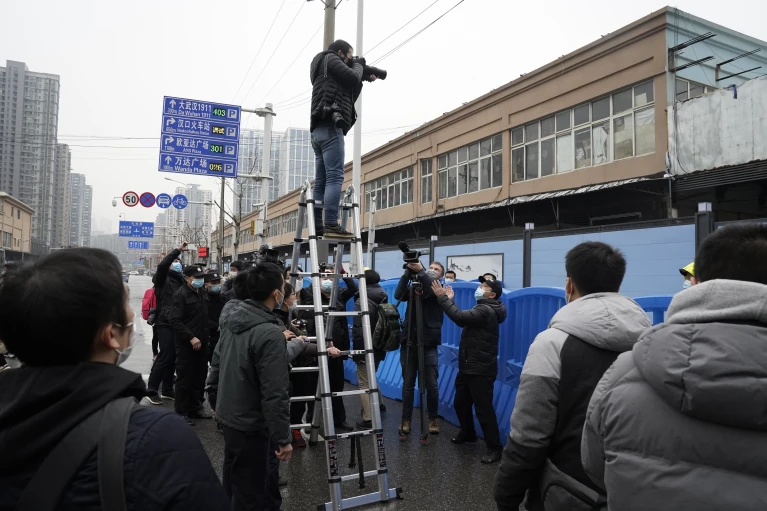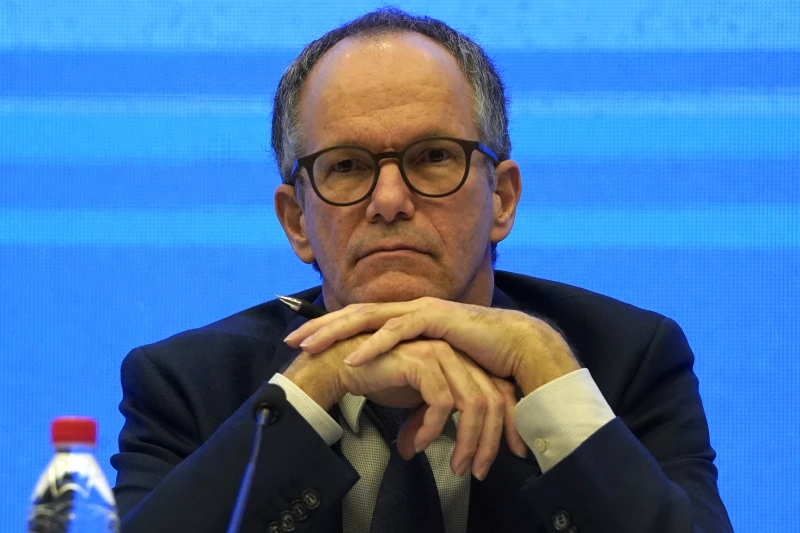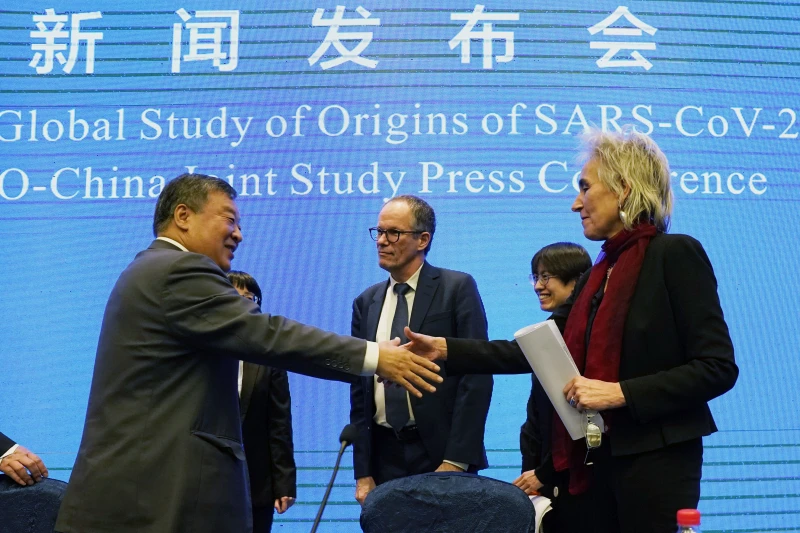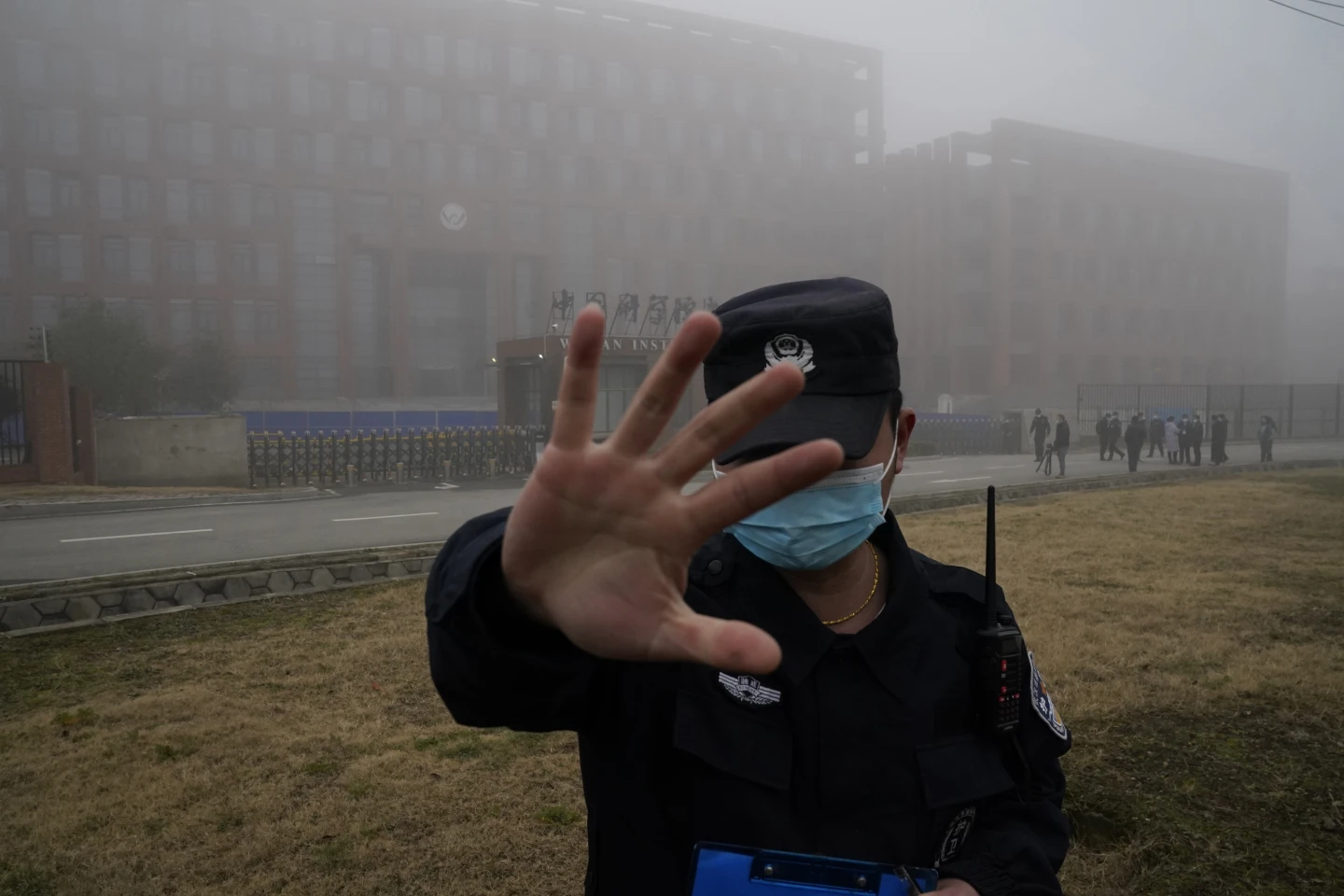Beijing (AP): The hunt for the origins of COVID-19 has gone dark in China, the victim of political infighting after a series of stalled and thwarted attempts to find the source of the virus that killed millions and paralyzed the world for months.
The Chinese government froze meaningful domestic and international efforts to trace the virus from the first weeks of the outbreak, despite statements supporting open scientific inquiry, an Associated Press investigation found. That pattern continues to this day, with labs closed, collaborations shattered, foreign scientists forced out and Chinese researchers barred from leaving the country.
The investigation drew on thousands of pages of undisclosed emails and documents and dozens of interviews that showed the freeze began far earlier than previously known and involved political and scientific infighting in China as much as international finger-pointing.
As early as Jan. 6, 2020, health officials in Beijing closed the lab of a Chinese scientist who sequenced the virus and barred researchers from working with him.
Scientists warn the willful blindness over coronavirus’ origins leaves the world vulnerable to another outbreak, potentially undermining pandemic treaty talks coordinated by the World Health Organization set to culminate in May.
At the heart of the question is whether the virus jumped from an animal or came from a laboratory accident. A U.S. intelligence analysis says there is insufficient evidence to prove either theory, but the debate has further tainted relations between the U.S. and China.

Unlike in the U.S., there is virtually no public debate in China about whether the virus came from nature or from a lab leak. In fact, there is little public discussion at all about the source of the disease, first detected in the central city of Wuhan.
Crucial initial efforts were hampered by bureaucrats in Wuhan trying to avoid blame who misled the central government; the central government, which muzzled Chinese scientists and subjected visiting WHO officials to stage-managed tours; and the U.N. health agency itself, which may have compromised early opportunities to gather critical information in hopes that by placating China, scientists could gain more access, according to internal materials obtained by AP.
In a faxed statement, China’s Foreign Ministry defended China’s handling of research into the origins, saying the country is open and transparent, shared data and research, and “made the greatest contribution to global origins research.” The National Health Commission, China’s top medical authority, said the country “invested huge manpower, material and financial resources” and “has not stopped looking for the origins of the coronavirus.”
It could have played out differently, as shown by the outbreak of SARS, a genetic relative of COVID-19, nearly 20 years ago. China initially hid infections then, but WHO complained swiftly and publicly. Ultimately, Beijing fired officials and made reforms. The U.N. agency soon found SARS likely jumped to humans from civet cats in southern China and international scientists later collaborated with their Chinese counterparts to pin down bats as SARS’ natural reservoir.
But different leaders of both China and WHO, China’s quest for control of its researchers, and global tensions have all led to silence when it comes to searching for COVID-19’s origins. Governments in Asia are pressuring scientists not to look for the virus for fear it could be traced inside their borders.
Even without those complications, experts say identifying how outbreaks begin is incredibly challenging and that it’s rare to know with certainty how some viruses begin spreading.
“It’s disturbing how quickly the search for the origins of (COVID-19) escalated into politics,” said Mark Woolhouse, a University of Edinburgh outbreak expert. “Now this question may never be definitively answered.”
CLOUDS OF SECRECY
Secrecy clouds the beginning of the outbreak. Even the date when Chinese authorities first started searching for the origins is unclear.
The first publicly known search for the virus took place on Dec. 31, 2019, when Chinese Center for Disease Control scientists visited the Wuhan market where many early COVID-19 cases surfaced.
However, WHO officials heard of an earlier inspection of the market on Dec. 25, 2019, according to a recording of a confidential WHO meeting provided to AP by an attendee. Such a probe has never been mentioned publicly by either Chinese authorities or WHO.
In the recording, WHO’s top animal virus expert, Peter Ben Embarek, mentioned the earlier date, describing it as “an interesting detail.” He told colleagues that officials were “looking at what was on sale in the market, whether all the vendors have licenses (and) if there was any illegal (wildlife) trade happening in the market.”
A colleague asked Ben Embarek, who is no longer with WHO, if that seemed unusual. He responded that “it was not routine,” and that the Chinese “must have had some reason” to investigate the market. “We’ll try to figure out what happened and why they did that.”
Ben Embarek declined to comment. Another WHO staffer at the Geneva meeting in late January 2020 confirmed Ben Embarek’s comments.
The Associated Press could not confirm the search independently. It remains a mystery if it took place, what inspectors discovered, or whether they sampled live animals that might point to how COVID-19 emerged.

A Dec. 25, 2019, inspection would have come when Wuhan authorities were aware of the mysterious disease. The day before, a local doctor sent a sample from an ill market vendor to get sequenced that turned out to contain COVID-19. Chatter about the unknown pneumonia was spreading in Wuhan’s medical circles, according to one doctor and a relative of another who declined to be identified, fearing repercussions.
A scientist in China when the outbreak occurred said they heard of a Dec. 25 inspection from collaborating virologists in the country. They declined to be named out of fear of retribution.
WHO said in an email that it was “not aware” of the Dec. 25 investigation. It is not included in the U.N. health agency’s official COVID-19 timeline.
When China CDC researchers from Beijing arrived on Jan. 1 to collect samples at the market, it had been ordered shut and was already being disinfected, destroying critical information about the virus. Gao Fu, then head of the China CDC, mentioned it to an American collaborator.
“His complaint when I met him was that all the animals were gone,” said Columbia University epidemiologist Ian Lipkin.

Robert Garry, who studies viruses at Tulane University, said a Dec. 25 probe would be “hugely significant,” given what is known about the virus and its spread.
“Being able to swab it directly from the animal itself would be pretty convincing and nobody would be arguing” about the origins of COVID-19, he said.
But perhaps local officials simply feared for their jobs, with memories of firings after the 2003 SARS outbreak still vivid, said Ray Yip, the founding head of the U.S. Centers for Disease Control and Prevention outpost in China.
“They were trying to save their skin, hide the evidence,” Yip said.
The Wuhan government did not respond to a faxed request for comment.
Another early victim was Zhang Yongzhen, the first scientist to publish a sequence of the virus. A day after he wrote a memo urging health authorities to action, China’s top health official ordered Zhang’s lab closed.
“They used their official power against me and our colleagues,” Zhang wrote in an email provided to AP by Edward Holmes, an Australian virologist.
On Jan. 20, 2020, a WHO delegation arrived in Wuhan for a two-day mission. China did not approve a visit to the market, but they stopped by a China CDC lab to examine infection prevention and control procedures, according to an internal WHO travel report. WHO’s then-China representative, Dr. Gauden Galea, told colleagues in a private meeting that inquiries about COVID-19’s origins went unanswered.
By then, many Chinese were angry at their government. Among Chinese doctors and scientists, the sense grew that Beijing was hunting for someone to blame.
“There are a few cadres who have performed poorly,” Chinese leader Xi Jinping said in unusually harsh comments in February. “Some dare not take responsibility, wait timidly for orders from above, and don’t move without being pushed.”
The government opened investigations into top health officials, according to two former and current China CDC staff and three others familiar with the matter. Health officials were encouraged to report colleagues who mishandled the outbreak to Communist Party disciplinary bodies, according to two of the people.
Some people both inside and outside China speculated about a laboratory leak. Those suspicious included right-wing American politicians, but also researchers close to WHO.
The focus turned to the Wuhan Institute of Virology, a high-level lab that experimented with some of the world’s most dangerous viruses.
In early February 2020, some of the West’s leading scientists, headed by Dr. Jeremy Farrar, then at Britain’s Wellcome Trust, and Dr. Anthony Fauci, then director of the U.S. National Institutes of Health, banded together to assess the origins of the virus in calls, a Slack channel and emails.
They drafted a paper suggesting a natural evolution, but even among themselves, they could not agree on the likeliest scenario. Some were alarmed by features they thought might indicate tinkering.
“There have (been) suggestions that the virus escaped from the Wuhan lab,” Holmes, the Australian virologist, who believed the virus originated in nature, wrote in a Feb. 7, 2020, email. “I do a lot of work in China, and I can (assure) you that a lot of people there believe they are being lied to.”
American scientists close to researchers at the Wuhan Institute of Virology warned counterparts there to prepare.
James LeDuc, head of a Texas lab, emailed his Wuhan colleague on Feb. 9, 2020, saying he’d already been approached by U.S. officials. “Clearly addressing this will be essential, with any kind of documentation you might have,” he wrote.
The Chinese government was conducting its own secret investigation into the Wuhan Institute. Gao, the then-head of the China CDC, and another Chinese health expert revealed its existence in interviews months and years later. Both said the investigation found no evidence of wrongdoing, which Holmes, the Australian virologist, also heard from another contact in China. But Gao said even he hadn’t seen further details, and some experts suspect they may never be released.
WHO started negotiations with China for a further visit with the virus origins in mind, but it was China’s Foreign Ministry that decided the terms.
Scientists were sidelined and politicians took control. China refused a visa for Ben Embarek, then WHO’s top animal virus expert. The itinerary dropped nearly all items linked to an origins search, according to draft agendas for the trip obtained by the AP. And Gao, the then-head of the China CDC who is also a respected scientist tasked with investigating the origins, was left off the schedule.
Instead, Liang Wannian, a politician in the Communist Party hierarchy, took charge of the international delegation. Liang is an epidemiologist close to top Chinese officials and China’s Foreign Ministry who is widely seen as pushing the party line, not science-backed policies, according to nine people familiar with the situation who declined to be identified to speak on a sensitive subject.
Liang ruled in favor of shutting the Wuhan market at the beginning of the outbreak, according to a Chinese media interview with a top China CDC official that was later deleted. Significantly, it was Liang who promoted an implausible theory that the virus came from contaminated frozen food imported into China. Liang did not respond to an emailed request for comment.
Most of the WHO delegation was not allowed to go to Wuhan, which was under lockdown. The few who did learned little. They again had no access to the Wuhan Institute of Virology or the wildlife market and obtained only scant details about China CDC efforts to trace the coronavirus there.
On the train, Liang lobbied the visiting WHO scientists to praise China’s health response in their public report. Dr. Bruce Aylward, a senior adviser to WHO Director-General Tedros Adhanom Ghebreyesus, saw it as the “best way to meet China’s need for a strong assessment of its response.”
The new section was so flattering that colleagues emailed Aylward to suggest he “dial it back a bit.”
“It is remarkable how much knowledge about a new virus has been gained in such a short time,” read the final report, which was reviewed by China’s top health official before it went to Tedros.
As criticism of China grew, the Chinese government deflected blame. Instead of firing health officials, they declared their virus response a success and closed investigations into the officials with few job losses.
“There were no real reforms, because doing reforms means admitting fault,” said a public health expert in contact with Chinese health officials who asked not to be identified because of the sensitivity of the matter.
In late February 2020, the internationally respected doctor Zhong Nanshan appeared at a news conference and said that “the epidemic first appeared in China, but it did not necessarily originate in China.”
The Chinese government was conducting its own secret investigation into the Wuhan Institute. Gao, the then-head of the China CDC, and another Chinese health expert revealed its existence in interviews months and years later. Both said the investigation found no evidence of wrongdoing, which Holmes, the Australian virologist, also heard from another contact in China. But Gao said even he hadn’t seen further details, and some experts suspect they may never be released.
WHO started negotiations with China for a further visit with the virus origins in mind, but it was China’s Foreign Ministry that decided the terms.
Scientists were sidelined and politicians took control. China refused a visa for Ben Embarek, then WHO’s top animal virus expert. The itinerary dropped nearly all items linked to an origins search, according to draft agendas for the trip obtained by the AP. And Gao, the then-head of the China CDC who is also a respected scientist tasked with investigating the origins, was left off the schedule.
Instead, Liang Wannian, a politician in the Communist Party hierarchy, took charge of the international delegation. Liang is an epidemiologist close to top Chinese officials and China’s Foreign Ministry who is widely seen as pushing the party line, not science-backed policies, according to nine people familiar with the situation who declined to be identified to speak on a sensitive subject.
Liang ruled in favor of shutting the Wuhan market at the beginning of the outbreak, according to a Chinese media interview with a top China CDC official that was later deleted. Significantly, it was Liang who promoted an implausible theory that the virus came from contaminated frozen food imported into China. Liang did not respond to an emailed request for comment.
Most of the WHO delegation was not allowed to go to Wuhan, which was under lockdown. The few who did learned little. They again had no access to the Wuhan Institute of Virology or the wildlife market and obtained only scant details about China CDC efforts to trace the coronavirus there.
On the train, Liang lobbied the visiting WHO scientists to praise China’s health response in their public report. Dr. Bruce Aylward, a senior adviser to WHO Director-General Tedros Adhanom Ghebreyesus, saw it as the “best way to meet China’s need for a strong assessment of its response.”
The new section was so flattering that colleagues emailed Aylward to suggest he “dial it back a bit.”
“It is remarkable how much knowledge about a new virus has been gained in such a short time,” read the final report, which was reviewed by China’s top health official before it went to Tedros.
As criticism of China grew, the Chinese government deflected blame. Instead of firing health officials, they declared their virus response a success and closed investigations into the officials with few job losses.
“There were no real reforms, because doing reforms means admitting fault,” said a public health expert in contact with Chinese health officials who asked not to be identified because of the sensitivity of the matter.
In late February 2020, the internationally respected doctor Zhong Nanshan appeared at a news conference and said that “the epidemic first appeared in China, but it did not necessarily originate in China.”
FAQs
How did the Chinese government respond to efforts to trace the origins of COVID-19?
The Chinese government froze meaningful domestic and international efforts to trace the virus, closing labs, barring researchers, and hindering collaborations.
What is the central question regarding the origins of COVID-19?
The central question revolves around whether the virus originated from an animal source or through a laboratory accident.
Was there any public debate in China regarding the origins of COVID-19?
No, there was virtually no public debate in China about the origins of COVID-19, and little public discussion overall about the source of the disease.
What challenges were faced in the early efforts to investigate the origins of COVID-19?
Initial efforts were hampered by bureaucratic hurdles in Wuhan, muzzling of Chinese scientists, and restricted access for WHO officials.
What actions did the Chinese government take in response to criticism and investigations into the origins of COVID-19?
The Chinese government deflected blame, declared its virus response a success, and closed investigations into officials with few job losses.
Except FAQs. This report is given by Associated Press. The Sen Times holds no responsibility for its content.

